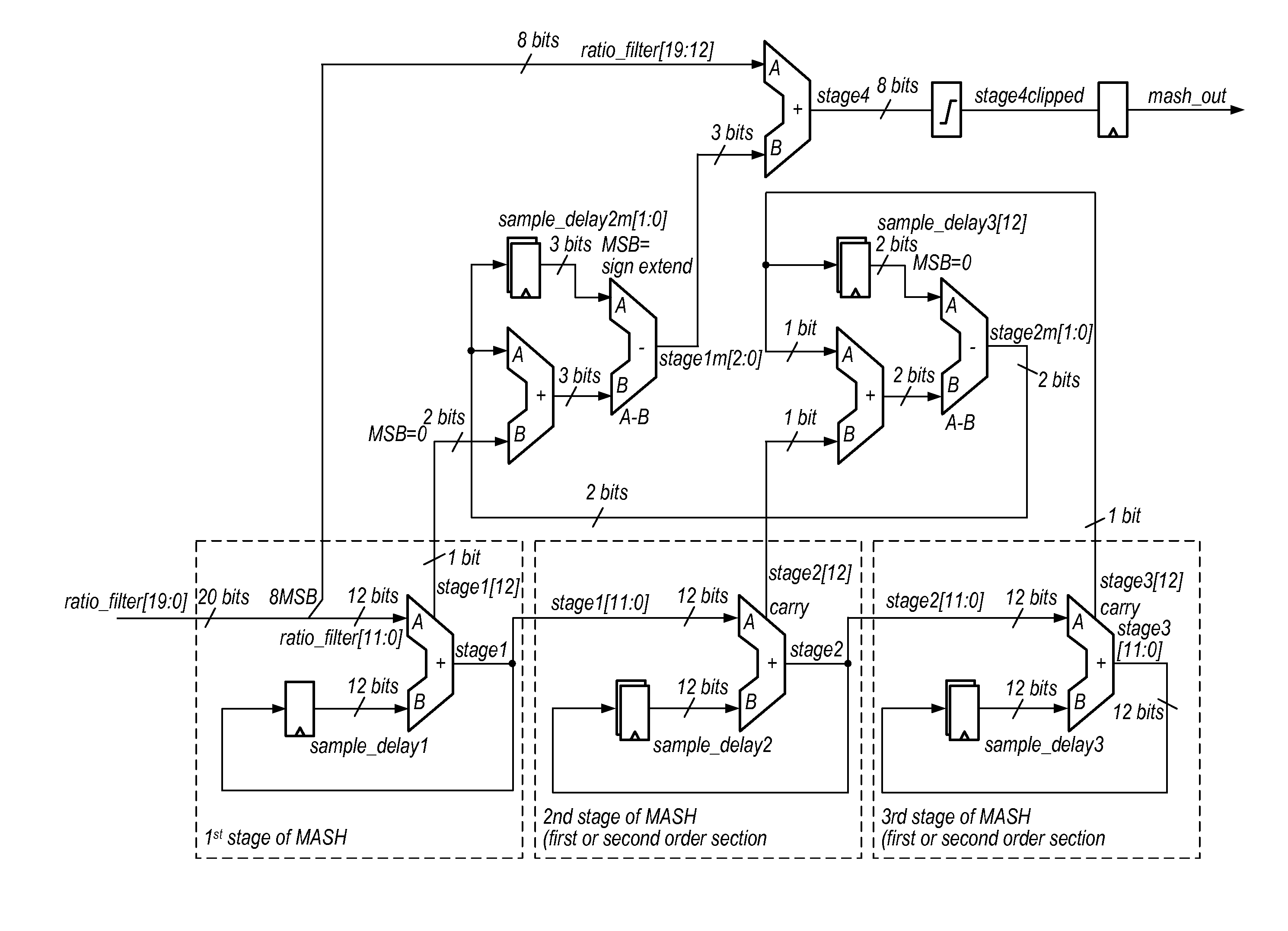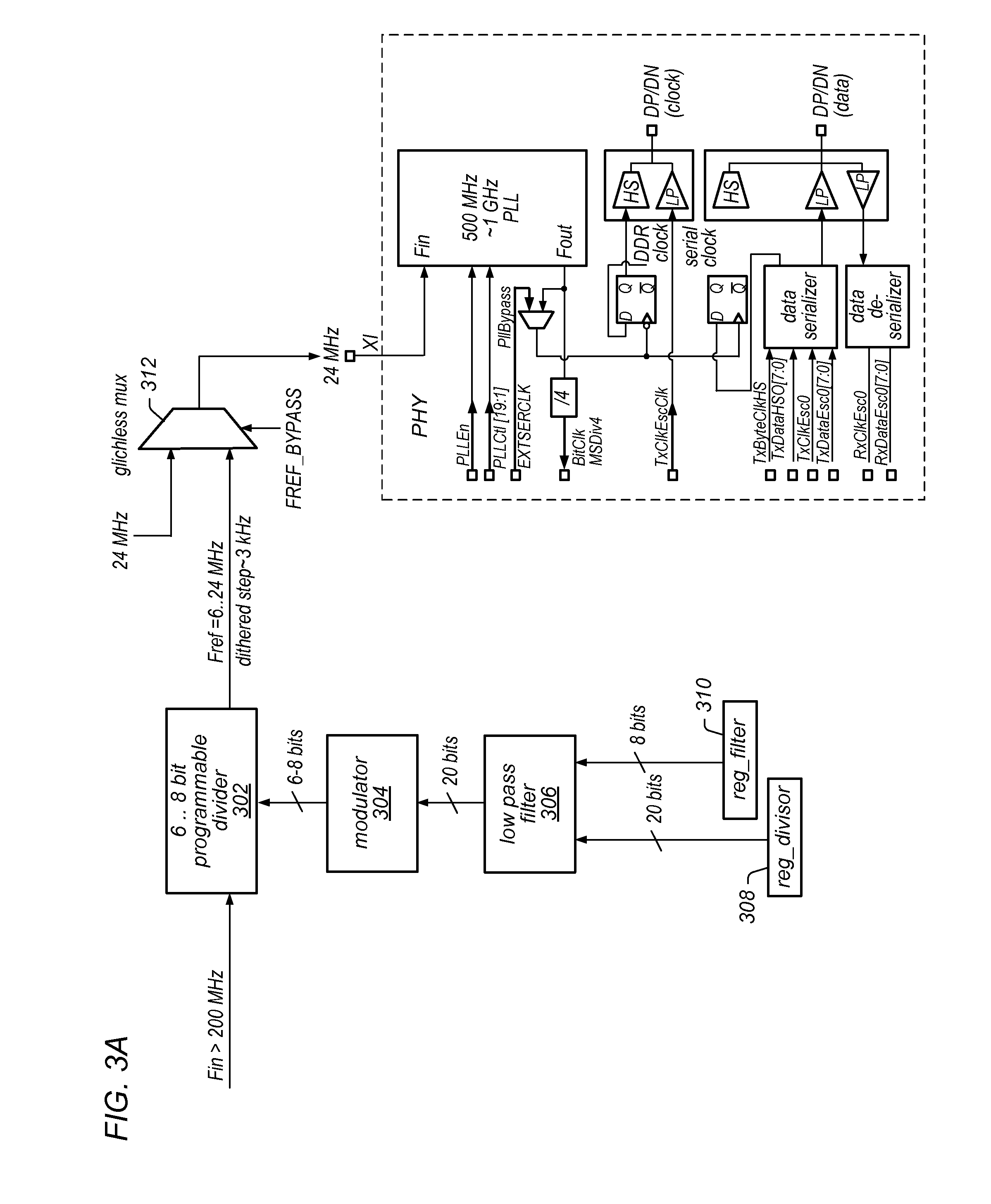Switching a PLL Clock Source to Reduce Wireless Communication Interference
- Summary
- Abstract
- Description
- Claims
- Application Information
AI Technical Summary
Benefits of technology
Problems solved by technology
Method used
Image
Examples
second embodiment
[0038]FIG. 3B illustrates a second embodiment, which operates similarly to FIG. 3A. However, as shown in FIG. 3B, a digital oscillator 320 is added to the reg_divisor 308 as input to the low pass filter 306. The digital oscillator 320 may receive a period and gain from reg_period 322 and reg_gain 324 to control the oscillator's output. By adding the digital oscillator 320, the divisor provided to the low pass filter changes over time, which results in the frequency of the HSSI clock varying over time. Accordingly, the harmonics of the HSSI clock may be spread among a wider frequency range and therefore lessen the strength of interference within wireless communication channel(s).
third embodiment
[0039]FIG. 3C illustrates a third embodiment, which operates similarly to FIG. 3B. However, as shown in FIG. 3C, instead of using reg_divisor 308, a table (e.g., a 16 entry table) may be used for specifying different frequencies. Similar to FIG. 3B, the selected divisor from this table may be added to the output of the digital oscillator as input to the low pass filter 306. The entry from the table may be selected by the counter 332, whose value may be modified according to the digital oscillator 320 (e.g., the carry from the digital oscillator 320).
[0040]FIGS. 5A-5D illustrate exemplary oscillator outputs and resulting clock output power levels. As shown, a sinusoidal oscillator output results in a power output that is concave in between two peaks. A triangular oscillator output results in lower peaks and more constant power output level. FIG. 5C illustrates a cubic oscillator output with a power output that is similar (but marginally better) than the triangular wave of FIG. 5C. Fi...
PUM
 Login to View More
Login to View More Abstract
Description
Claims
Application Information
 Login to View More
Login to View More - Generate Ideas
- Intellectual Property
- Life Sciences
- Materials
- Tech Scout
- Unparalleled Data Quality
- Higher Quality Content
- 60% Fewer Hallucinations
Browse by: Latest US Patents, China's latest patents, Technical Efficacy Thesaurus, Application Domain, Technology Topic, Popular Technical Reports.
© 2025 PatSnap. All rights reserved.Legal|Privacy policy|Modern Slavery Act Transparency Statement|Sitemap|About US| Contact US: help@patsnap.com



